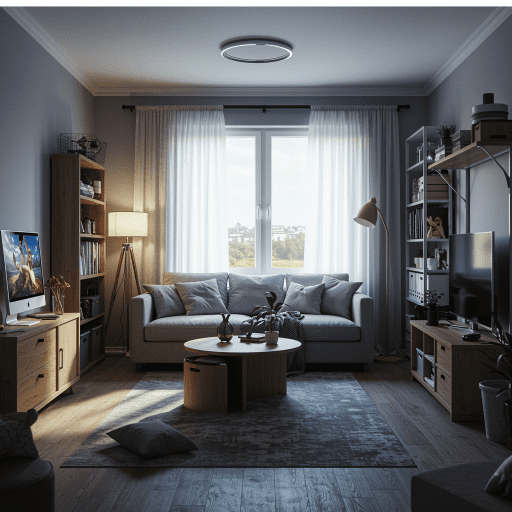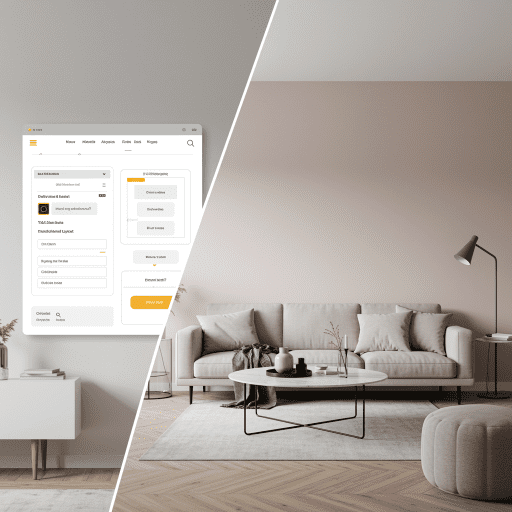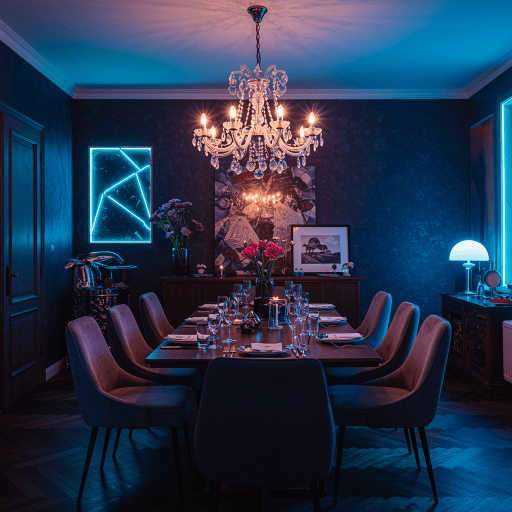Have you ever walked into a room, whether it be in a show-home, a friend’s house, or even a hotel and been genuinely blown away by what you saw? You simply found yourself standing there, wide-eyed, jaw-dropped, and almost mesmerised by your new surroundings… This is often the product of quality interior design, coupled with some savvy decoration.
But, what is the difference between the two? And can one exist without the other? In this article, we’re going to highlight the key differences between both, and how they can be utilised to transform a space into something that makes people stop, stare, and say things like: “Oh my god, I need this in my life!”

Interior design VS interior decoration
So, what is the difference between interior design and interior decoration?
Certainly, there is some clear overlap between interior design and decorating, however, they are fundamentally different and it is important to understand those distinctions.
- Interior design is both and art and science intent on understanding people’s behaviour, anticipating their needs, and then creating a functional space within a building to accommodate that.
- Interior decorating is the craft of furnishing and adorning a space using various decorative elements in order to achieve a specific, desired aesthetic.
The important thing to remember is that in some cases, an interior designer may decorate, however, an interior decorator does not handle design.
Decorators will come into an existing space, pick a colour scheme and/or apply some decorative finishes to pull off the desired look. Their job isn’t to optimise the space or alter its functionality; simply to give it a fresh lick of paint—or a little ‘nip & tuck’ if you will.
Interior designers on the other hand, will change the face entirely. They will re-optimise the layout of a room and create a certain flow that will transform a space not only from an aesthetic perspective, but again, from a functional one as well.

Feng Shui is the perfect example of interior design and its fundamental intention
When understanding the differences between an interior designer and a decorator, Feng Shui is the perfect example:
Feng-Shui: a system of laws considered to govern spatial arrangement and orientation in relation to the flow of energy (qi), and whose favourable or unfavourable effects are taken into account when siting and designing buildings.
This sums up the purpose of an interior designer wonderfully. In fact, any interior designer worth their salt will have a thorough understanding (and passion) for this ancient practice (for which we have the Chinese to thank)!
An interior designer will take the needs and requirements of the home owner (or the intended clientele of a commercial establishment) and think deeply about what they can do with the space available in order to accommodate them.
As an example, let’s say that an expecting mother who is wheel-chair bound would like to convert one of the rooms in their house to a nursery. What could an interior designer bring to the table, that an interior decorator cannot?
In this case, an interior designer would be focused on creating a space that is both safe and comfortable for the baby, whilst accommodating the mother’s needs; - i.e., a specially designed, height-appropriate baby-changing station with convenient wheelchair access.
On the other hand, an interior decorator will not be able to change the functionality of the space in order to make it more accessible and convenient for the mother. Of course, they will undoubtedly be able to make the room itself look positively stunning with plenty of beautiful colours and features that one would expect in a nursery but in this instance, an interior designer would bring so much more value.

Interior designers are interior decorators with extra steps
The fact is, while not every interior designer may have experience with painting, plastering, or applying decorative finishes, they will have the eye for it. Interior design is a technical field that requires a creative mind and as such, interior designers often know precisely how to decorate a space once they are finished with it—which is advantageous when they are the one’s designing the space in the first place.
Think of a UX designer building a website; it’s the same principle, only in a digital world. A UX designer will design and build a website from the ‘ground up’, taking into consideration the overall user experience, usefulness, desirability, and aesthetic appearance (or decoration) of the website itself – e.g., colours, font style & size, image placement, paragraph length, and menu navigation.

Conclusion
Interior designers and Interior Decorators are not the same. They serve different purposes in a home or commercial space to achieve an effect that is desired by their clientele. An interior designer will take into account the needs of the individual, such as wheelchair accessibility for someone who can't move around well, while an interior decorator may not be able to do so without help from the design team. Some designs require both services but it's important to know what you're looking for when hiring one person versus another. If your goal is simply cosmetic renovations then hire an interior decorator; if you need more than just decorative changes then get in touch with our team of Interior Design experts today!